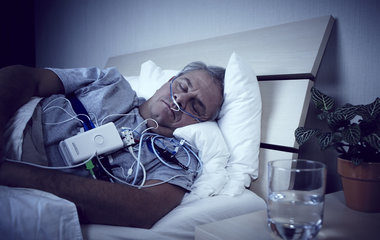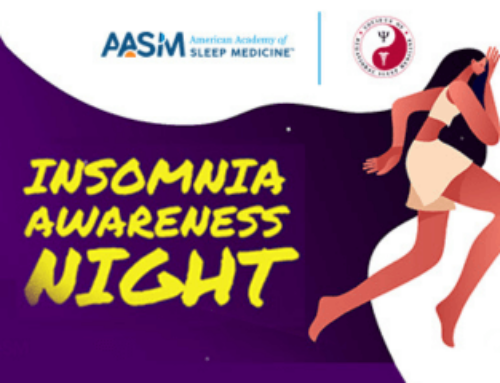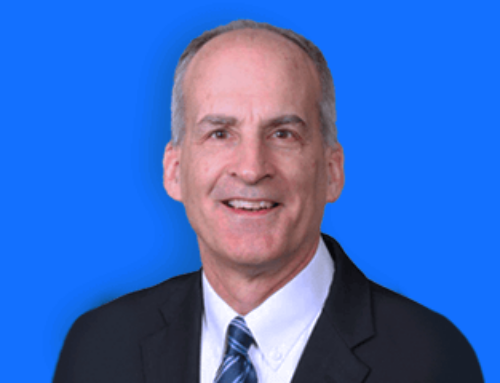DARIEN, IL – A new position statement published by the American Academy of Sleep Medicine (AASM) describes the appropriate clinical use of a home sleep apnea test (HSAT).
An HSAT is a medical assessment that can be ordered by a physician for the diagnosis of obstructive sleep apnea (OSA) in select adults. In the position statement the term “physician” refers to a medical provider who is licensed to practice medicine.
Properly diagnosing and treating OSA in adults is of crucial health importance. When left untreated, OSA is a potentially lethal disease that can increase the risk of serious health complications such as hypertension, heart failure, type 2 diabetes, and stroke.
“A home sleep apnea test provides valuable information for the diagnostic assessment of certain patients with suspected obstructive sleep apnea,” said AASM President Dr. Ilene Rosen. “However, the at-home sleep apnea test is only one component of a comprehensive sleep evaluation, and it is important for a board-certified sleep medicine physician to be involved in reviewing and interpreting the raw data from the device.”
The statement, which is published in the Oct. 15 issue of the Journal of Clinical Sleep Medicine, comprises the following positions:
- Only a physician can diagnose medical conditions such as OSA and primary snoring.
- The need for, and appropriateness of, an HSAT must be based on the patient’s medical history and a face-to-face examination by a physician, either in person or via telemedicine.
- An HSAT is a medical assessment that must be ordered by a physician to diagnose OSA or evaluate treatment efficacy.
- A sleep apnea home test should not be used for general screening of asymptomatic populations.
- Diagnosis, assessment of treatment efficacy, and treatment decisions must not be based solely on automatically scored HSAT data, which could lead to sub-optimal care that jeopardizes patient health and safety.
- The raw data from the home sleep apnea test device must be reviewed and interpreted by a physician who is either board-certified in sleep medicine or overseen by a board-certified sleep medicine physician.
Common symptoms of OSA include loud snoring, choking or gasping during sleep, and daytime sleepiness. According to a clinical practice guideline published earlier in the year by the AASM, polysomnography is the standard diagnostic test for the diagnosis of OSA in adult patients in whom there is a concern for OSA based on a comprehensive sleep evaluation. However, a home sleep apnea test with a technically adequate device can be used for the diagnosis of OSA in uncomplicated adult patients presenting with signs and symptoms that indicate an increased risk of moderate to severe OSA.
Also published in the Oct. 15 issue of the Journal of Clinical Sleep Medicine is an AASM position paper stating that the use of an HSAT is not recommended for the diagnosis of OSA in children. An objective evaluation of the available literature found that an HSAT may be technically feasible in carefully controlled conditions when electrodes are placed on a child by a trained clinician. However, there is insufficient evidence to support the efficacy of an HSAT when used at home to assess a child’s breathing during sleep.
For a copy of the statement, “Clinical Use of a Home Sleep Apnea Test: An American Academy of Sleep Medicine Position Statement,” or the paper, “American Academy of Sleep Medicine Position Paper for the Use of a Home Sleep Apnea Test for the Diagnosis of OSA in Children,” or to arrange an interview with an AASM spokesperson, please contact AASM Communications Coordinator Corinne Lederhouse at 630-737-9700, ext. 9366, or clederhouse@aasm.org.
The monthly, peer-reviewed Journal of Clinical Sleep Medicine is the official publication of the American Academy of Sleep Medicine, a professional membership society that improves sleep health and promotes high quality, patient-centered care through advocacy, education, strategic research, and practice standards. The AASM encourages patients to talk to their doctor about sleep problems and visit www.sleepeducation.org for more information about sleep, including a searchable directory of AASM-accredited sleep centers.









